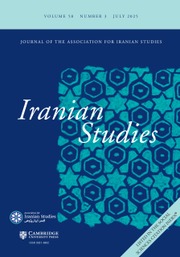No CrossRef data available.
Article contents
“I'd rather be married to someone I can control”: Female Javānmardī in Gulbadan Begum's Humayunnamah as a Mirror for Princesses
Published online by Cambridge University Press: 27 December 2024
Extract
The mischievous quote making up this article's title comes from the Humayunnamah, a chronicle written around 1587 in Persian by Gulbadan Begum (1523–1603). Gulbadan was a Mughal princess of Timurid heritage and the daughter of the founder of the Mughal dynasty, Zahir al-Din Muhammad Babur (1483–1530).1 In the Humayunnamah, Gulbadan recounts the response Hamidah Begum (1542–1605) gives upon being chastised by her future mother-in-law, Dildar Begum:
“Look whether you like it or not, in the end, you are going to be married to somebody. Who could be better than the Emperor?”
“Yes, you are right. But I'd rather marry someone whose collar my hand can reach.”2
- Type
- Article
- Information
- Copyright
- Copyright © The Author(s), 2024. Published by Cambridge University Press on behalf of The Association for Iranian Studies



